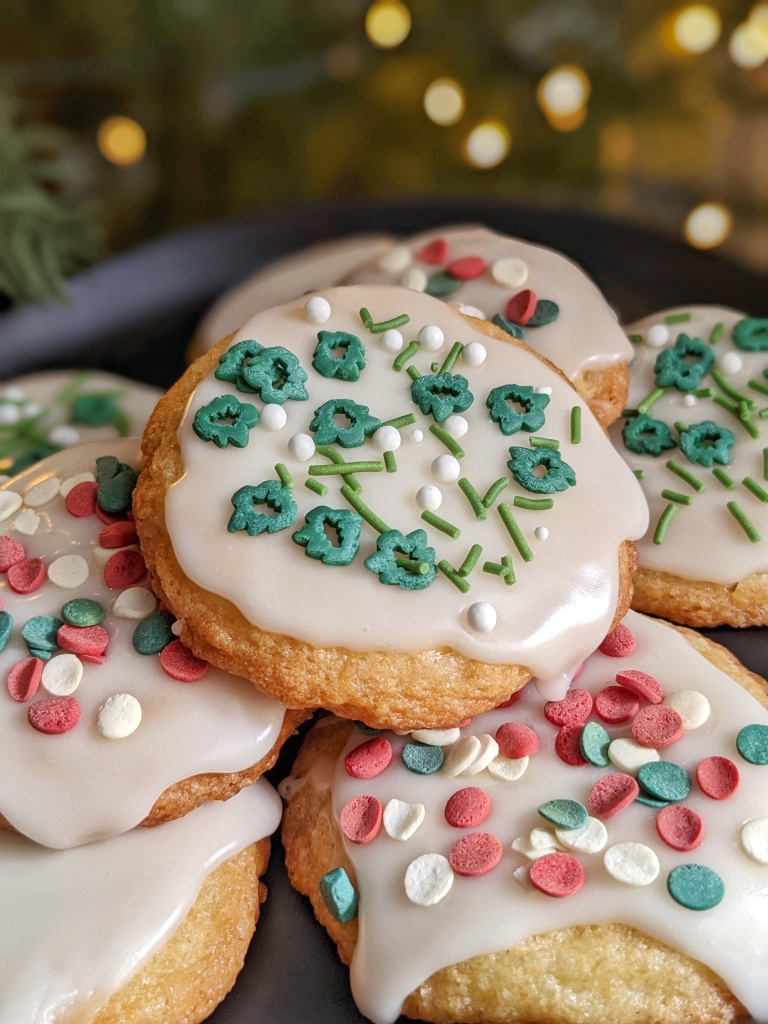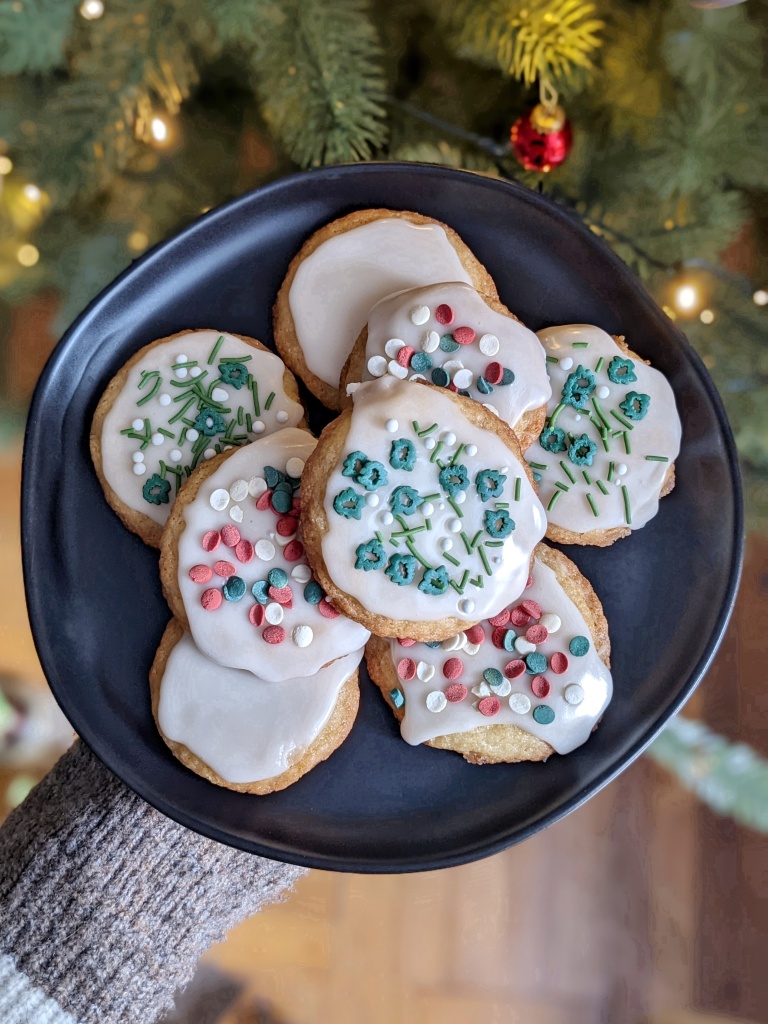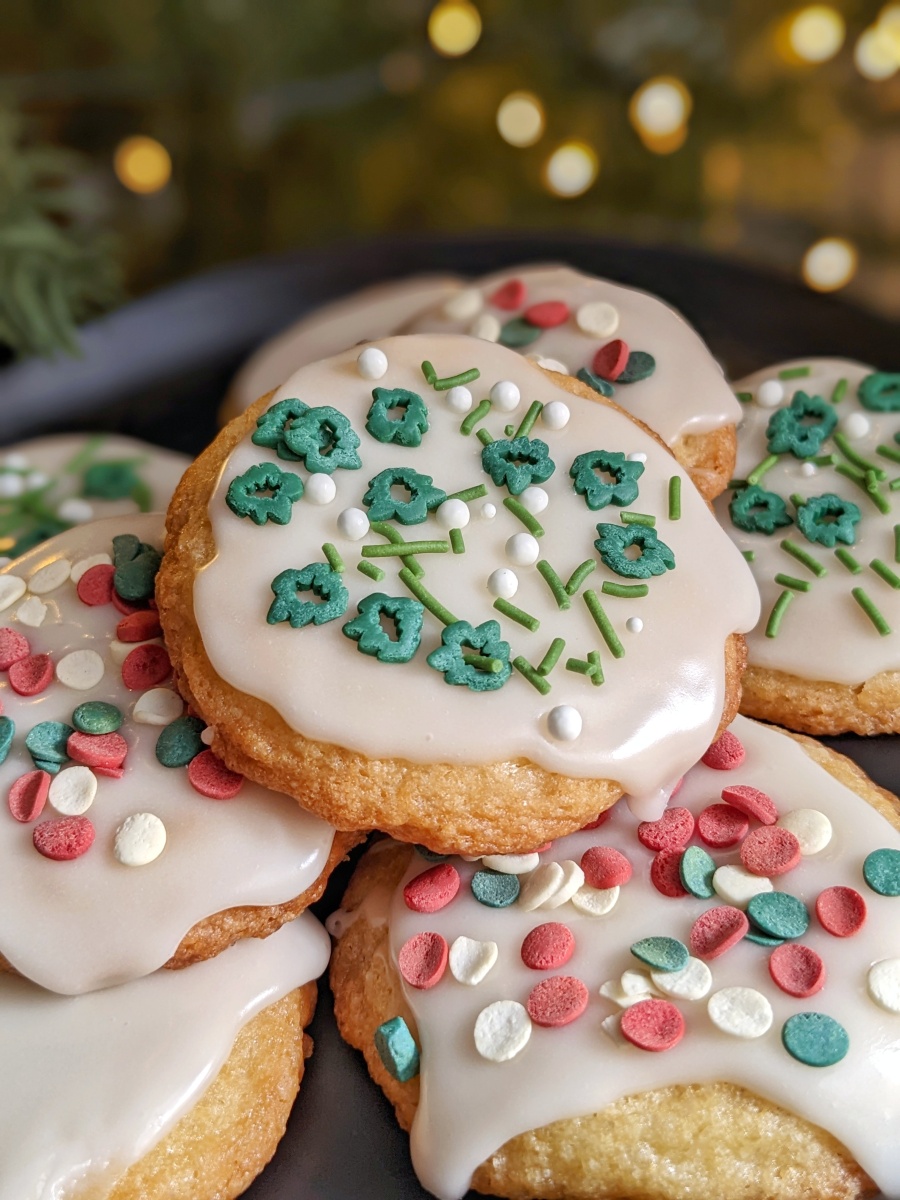Glossy Cookie Icing
I’ve written two blog posts in a week and one of them is a recipe. What is this, 2015? 🫠
I am currently embracing Christmas Cookie Season, and I will be frying up latkes and sufganiyot at some point next week for Hanukkah. By Manhattan standards, I’ve hit the jackpot with apartment kitchens: it’s eat-in with a 6′ tall south-facing window & a full-sized gas range. Ahhh, my own little culinary oasis! I’ve got my cookie sheets, parchment paper, and cooling racks ready to go, as well as an ample bags of powdered sugar and overpriced Red Dye 40-free Christmas sprinkles from Whole Foods that will soon go dormant for another 11 months.
I starting cooking and baking on my own when I was in, say, 3rd or 4th grade. Many of my kitchen habits from back then carried on with me for way too long; even at 38, I have occasional, “Oh, wow, DUH! Hindsight is 20/20 there, Clayton!” moments. Example: I can cook grilled cheese and quesadillas on a low heat to prevent them from burning before the cheese melts. Logical Allison knew this in her youth, but Set – In – Her – Ways Allison took way too long to acknowledge and put it into practice, highly-heated and burned sandwiches be damned!
For years, I’ve been on the hunt for that perfect sugar cookie icing, but could never quite get it right. While I mixed my confectioner’s sugar, scant teaspoons of milk, and vanilla extract, the results I got never met the expectations I had. Why couldn’t I have those glossy cookies I saw on online and in magazines? Why did my glazes half-absorb into my cookies? After ample research, I had a peak “DUH!” moment when I realized my past glazes were missing a key ingredient that I rarely use, much less remember having: light corn syrup. Much like molasses – hey, tucked within Christmas Cookie Season is also Pfeffernüsse Season! – corn syrup is an ingredient I use seasonally. It sits in its container, neglected, taking up too much space in my cupboard that would be better filled with yet another packet of Momofuku Soy & Scallion Noodle packs. After coming across many recipes that incorporated light corn syrup in their icings, I toyed with my own icing development until I came up with something I liked. Most icing recipes contain the same basic ingredients and proportions – I am not reinventing the wheel here – but I played around to find what made me happy. A little trial and error gave me the consistency I wanted for both the wet icing and when it dried on the cookies. I…was floored, and Logical Allison was rather embarrassed that this didn’t click years earlier. Oh well. Now, with confidence, I can make all the glossy cookies I want. To borrow a simple (and safe for work) “Letterkenny” phrase: Onward!


(Oh, and this is me not caring about the warmer light in one photo & cooler light in the other. Come at me. Ha!)
Glossy Cookie Icing
(Makes enough for 8 sugar cookies)
Ingredients
- 1 cup powdered sugar
- 2 teaspoons light corn syrup
- 1/2 teaspoon vanilla extract
- 2 tablespoons whole milk, divided into 1 tablespoon servings
Before We Get Started…
- Much of my research noted to use clear vanilla extract or flavoring in their recipes. I’ve long used “regular” pure vanilla extract in my white glazes and icings, and I have personally noticed no browning or darkening. Use whichever!
- As for corn syrup, I would encourage using light corn syrup over dark corn syrup. Dark corn syrup – such as Karo’s – does have molasses as an ingredient, which may impact the color & flavor of your icing.
- This recipe has been tested with whole milk only; I cannot note how different non-dairy milks or low/no-fat dairy milks may work for this recipe.
Directions
- Sift powdered sugar into a large bowl to ensure there are no lumps; sift for a second time if you want to ensure a smooth texture.
- Add corn syrup into sugar and whisk; the powdered sugar should start to take on a melted appearance once incorporated with the corn syrup. Add vanilla extract to icing and mix to incorporate.
- Add one tablespoon of milk to icing and whisk until incorporated; this icing should be thick yet spreadable and able to drip slowly from a whisk or utensil. If desired, slowly add an additional tablespoon of milk and whisk to thin icing.
- Optional: Add in food coloring once all ingredients are incorporated and icing is desired thickness.
